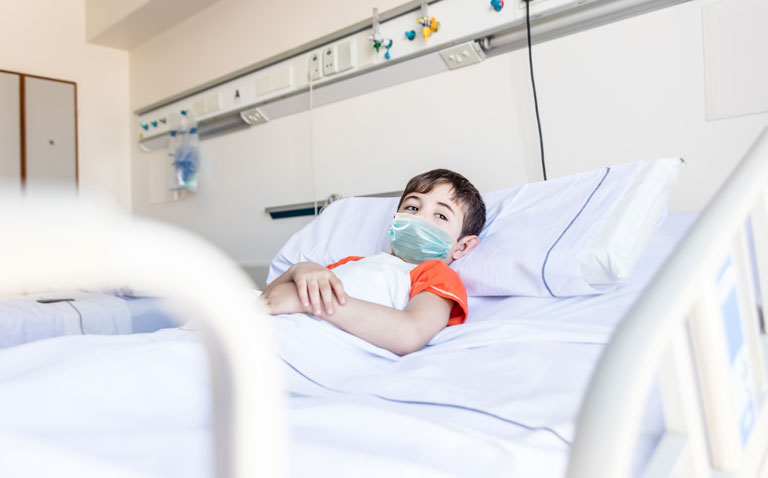Neurological manifestations have been found in nearly half of children hospitalised with COVID-19 or MIS-C according to a global study
A neurological manifestation has been found in 44% of children who had been hospitalised with either COVID-19 or multisystem inflammatory syndrome (MIS-C) according to researchers from the Global Consortium Study of Neurologic Dysfunction in COVID-19 (GCS-NeuroCOVID).
This multinational research collaborative initiative was established in April 2020 and designed to collect information on the prevalence and outcomes of neurological manifestations associated with both acute infection with COVID-19 and those with MIS-C and the equivalent adult condition.
Among adults with COVID-19, neurological problems are common and in one study, 82% of patients reported experiencing such problems. In contrast, a study of 27 children with COVID-19 MISC-C, found that only four, previously healthy children, had new-onset neurological symptoms including encephalopathy, headaches, brainstem and cerebellar signs, muscle weakness, and reduced reflexes. However, all four children were admitted to an intensive care unit.
The evidence of neurological manifestations in children to date is based on small samples. As a result, for the present study, the team made use of the GCS-NeuroCOVID) database and searched for children (i.e., those aged under 18 years of age) hospitalised with COVID-19 related condition which was either confirmed through testing or based on the presence of recognised clinical symptoms.
The diagnosis of MIS-C was based on the Centers for Disease Control and Prevention (CDC) guidance. The primary outcome of the study was the frequency and type of neurological manifestations both overall, and due to COVID-19 and MIS-C.
Neurological manifestations identified
A total of 1,493 children with a median age of 8 (47% female) were included in the analysis, of whom 86% had COVID-19 and the remainder MIS-C.
Children with a pre-existing medical condition were more likely to become infected with COVID-19 than MIS-C (p < 0.001) although children with MIS-C were more likely to be admitted to intensive care units (69% vs 29%).
Overall, 44% of the whole cohort (40% of those with COVID-19 and 66% of those with MIS-C) had at least one neurological manifestation. The most common findings were headache (16% vs 47%, COVID-19 vs MIS-C) and acute encephalopathy (15% vs 22%) and for both conditions, this difference was statistically significant (p < 0.05). Other manifestations included seizures (8%), anosmia (4%) and ageusia (3.6%). Children with neurological manifestations were also more likely to require admission to ICU (51% vs 22%, p < 0.001).
Using regression analysis, the researchers identified that for the whole cohort, several factors including older age (adjusted odds ratio, aOR = 1.20, 95% CI 1.07 – 1.13), MIS-C (aOR = 2.16), neurologic (aOR = 3.48) and a pre-existing metabolic condition (aOR = 1.65) were all significantly (p < 0.05) associated with the presence of neurological manifestations.
Commenting on these results, the authors noted how the frequency of observed neurological manifestations in the cohort was fortunately much lower than that reported in adults, which was 80%. They concluded that neurological symptoms were a common problem in children hospitalised with COVID-19 and that the presence of such symptoms was much more likely in older children and those with pre-existing neurological and metabolic conditions.
Citation
Fink EL et al. Prevalence and Risk Factors of Neurologic Manifestations in Hospitalized Children Diagnosed with Acute SARS-CoV-2 or MIS-C Pediatr Neurol 2022










